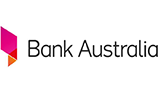How much deposit do you need for a $300,000 mortgage?
To avoid needing to pay for lender’s mortgage insurance (LMI) on a $300,000 loan, you would need a home deposit (or equity in your existing property) of at least $75,000. In other words, that would be the amount required for your loan-to-value ratio (LVR) to be 80%, which is the maximum for most lenders before LMI applies.
But you may still be approved for a home loan with a deposit of as little as 5% (LVR of 95%) if you agree to pay for LMI to protect the lender, or apply as part of the government’s Home Guarantee Scheme (HGS).
Remember, you should budget for other home-buying costs like stamp duty and conveyancing fees separately to your deposit.
Can I afford a $300,000 mortgage?
This will depend on your income, deposit and loan term. A guide given by some banks is that you shouldn't spend more than 30% of your after-tax household income on mortgage payments or housing costs.
Based on that 30% guide, on a $300,000 home loan with a 30-year term at 5.29% interest, you would need a monthly household income (after tax) of at least $5,546.83 to comfortably afford the home loan repayment of $1,664.05.
Before you commit to a mortgage of any size, make you understand all the costs associated with it, including:
Interest
This is the cost of borrowing money, paid over the life of the loan.
Lender’s mortgage insurance (LMI)
If your deposit is less than 20%, you may have to pay LMI to protect the lender in case of default.
Home loan fees
Fees charged by the lender to set up and manage your home loan.
Stamp duty (if applicable)
A state government tax on property purchases.
Conveyancing fees
Costs of legal work involved in buying a home, including title searches and property transfers.












